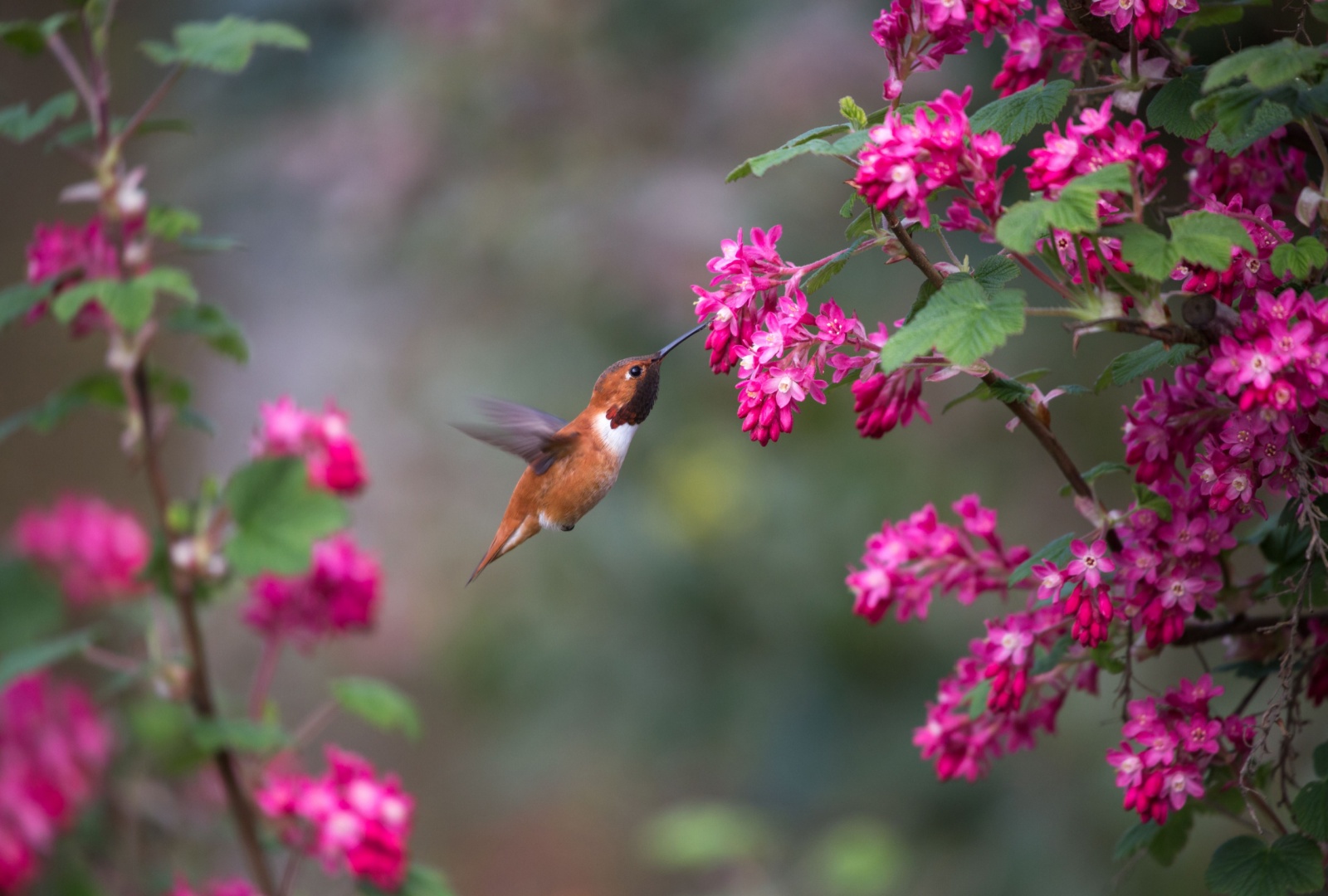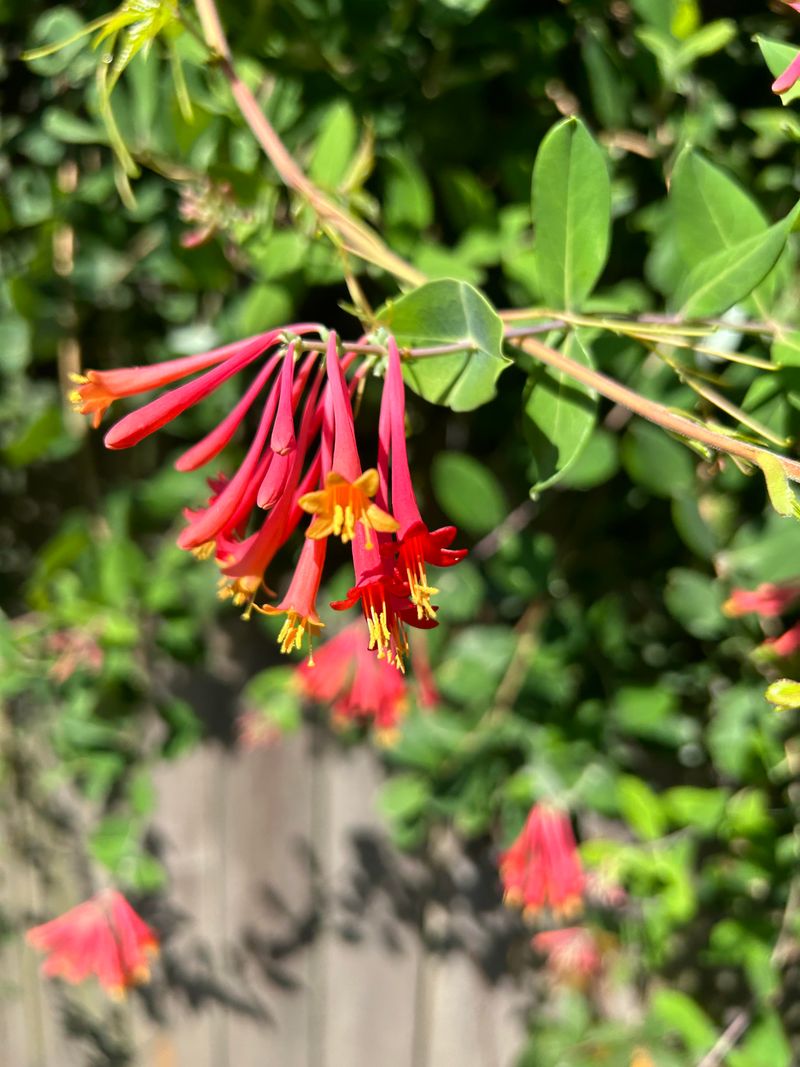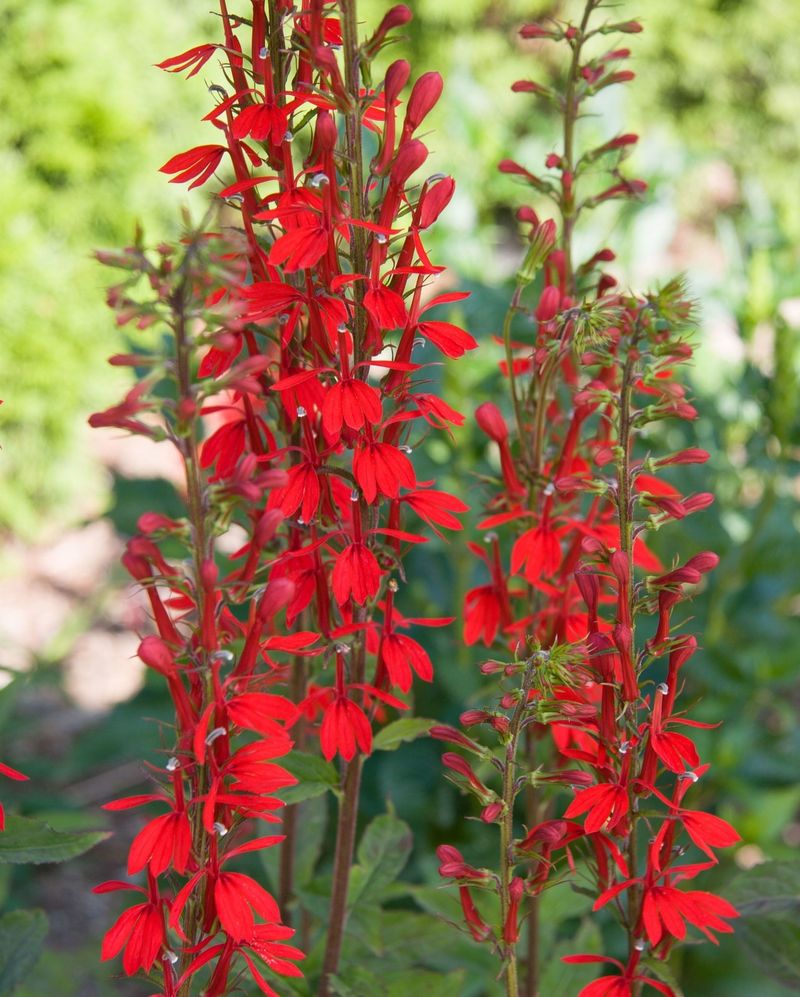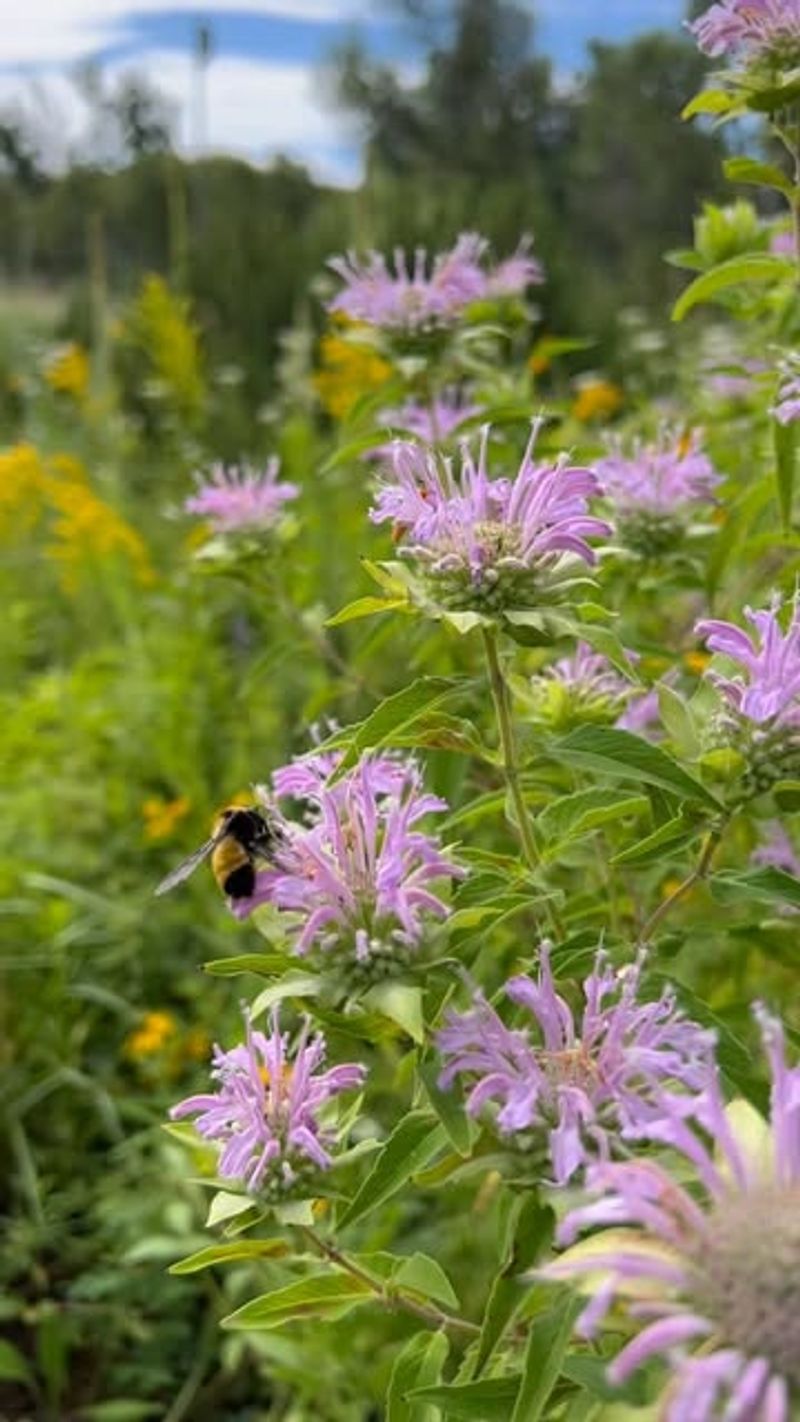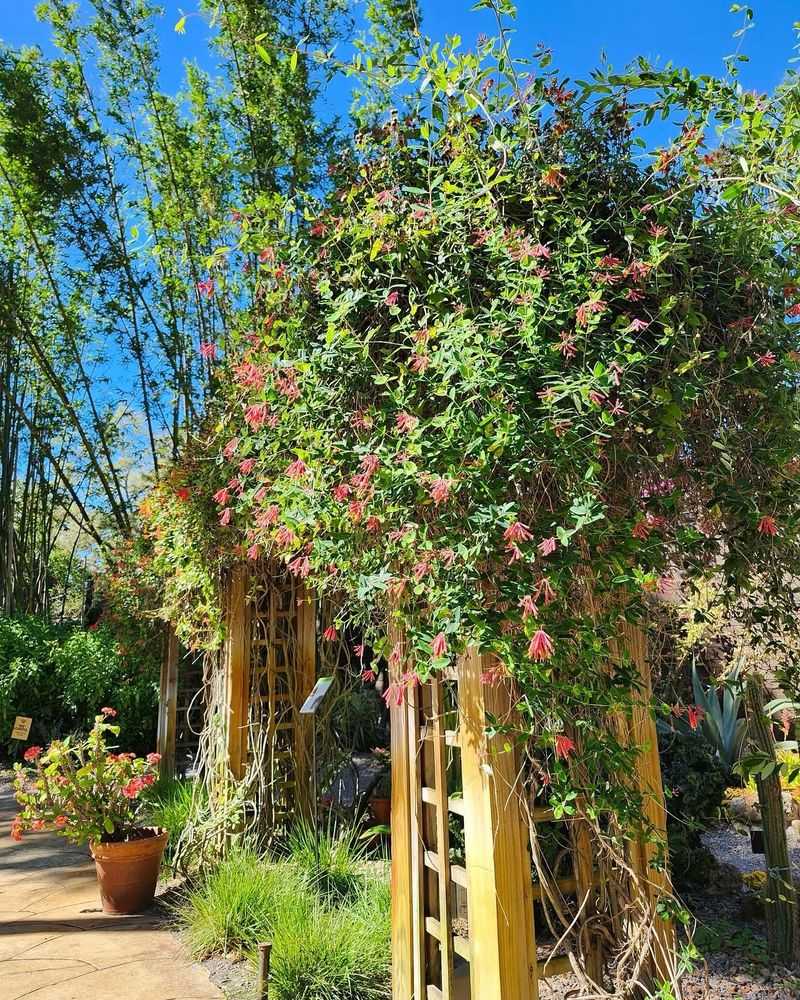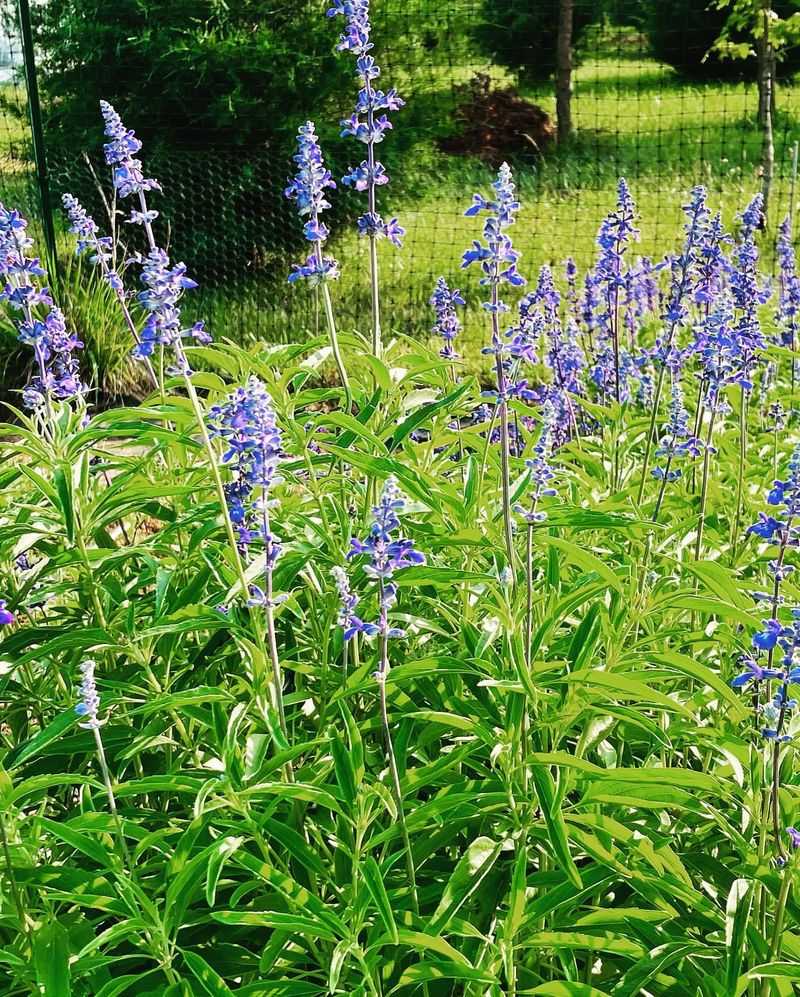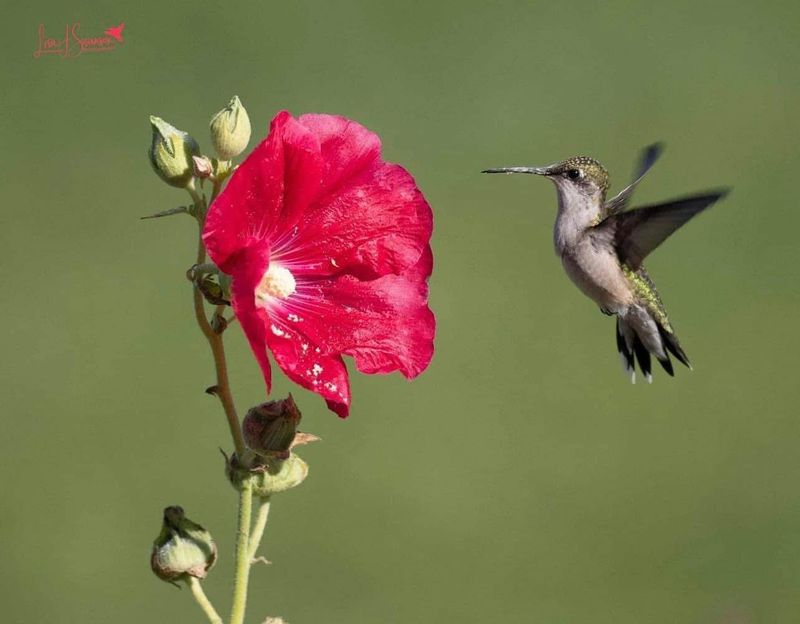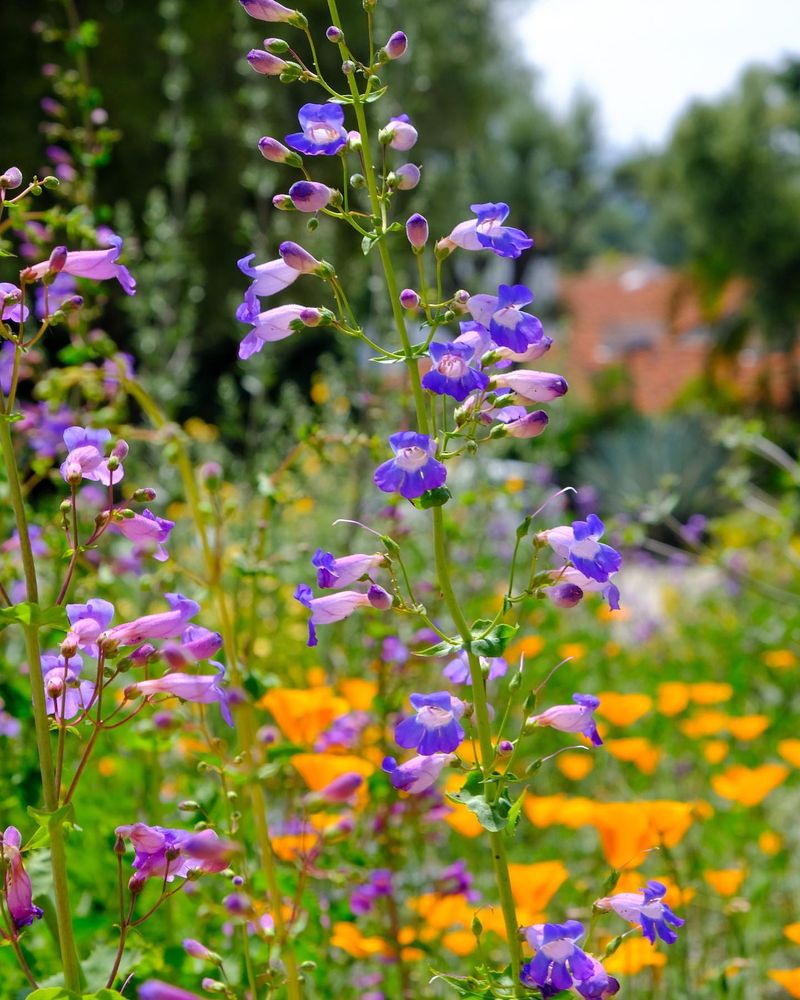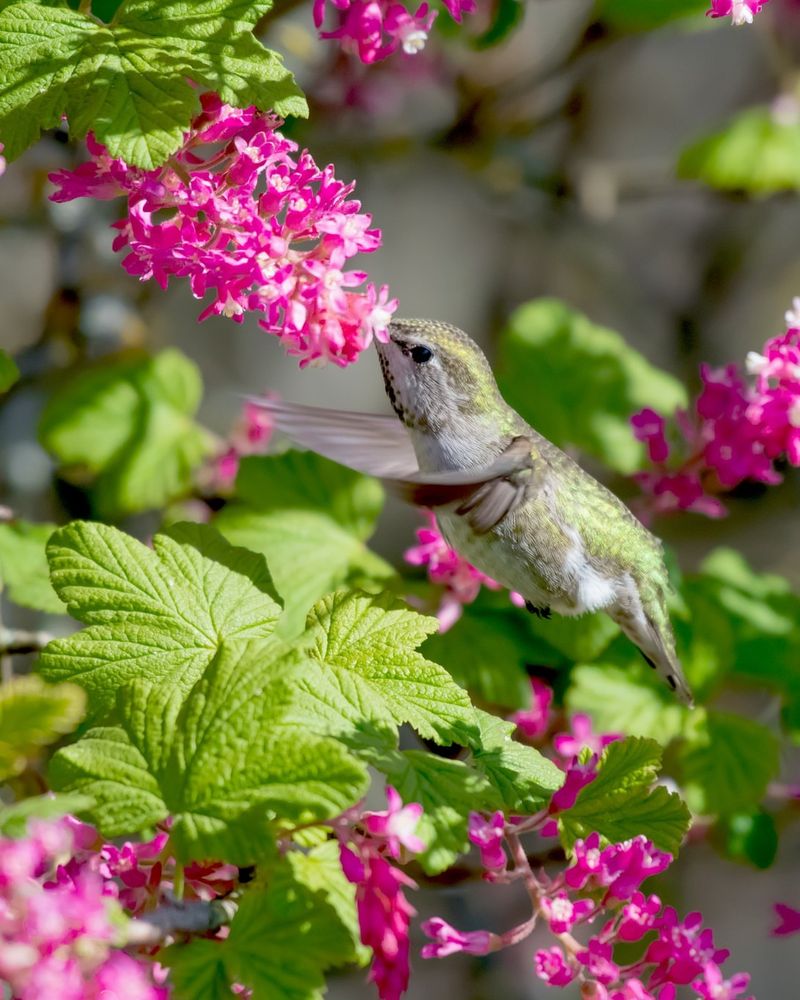Pittsburgh gardeners looking for more privacy don’t need to build tall wooden fences that block natural wildlife. Living fences made from carefully selected plants can create beautiful natural boundaries while attracting colorful hummingbirds to your yard.
These green barriers offer the perfect combination of seclusion and wildlife habitat, turning your garden into a private sanctuary buzzing with tiny, iridescent visitors.
1. Plant Trumpet Vine Archways
Nothing catches a hummingbird’s eye faster than the bright orange-red flowers of trumpet vines. Create archways over garden entrances by training these vigorous climbers on sturdy frames.
The dense foliage provides excellent screening while the tubular flowers deliver sweet nectar that hummingbirds can’t resist. Pittsburgh’s climate is perfect for these hardy vines that return year after year with minimal care.
2. Establish Cardinal Flower Borders
Cardinal flowers stand tall with brilliant red blooms that practically scream “hummingbirds welcome here!” Plant these native perennials in rows along property lines where they’ll grow 3-4 feet high.
The vibrant flowers create a living privacy screen from July through September. Since they thrive in Pittsburgh’s partially shaded and sometimes damp conditions, they’re perfect for those tricky spots where other privacy plants struggle.
3. Create Bee Balm Hedgerows
Bee balm’s shaggy, crown-like flowers in shades of red, pink, and purple are hummingbird magnets. Planted in dense rows, these natives form a colorful, fragrant barrier reaching 3-5 feet tall.
The aromatic leaves release a pleasant minty scent when brushed against. Many Pittsburgh gardeners love how bee balm thrives in our region’s clay soils, making it an easy-care option for creating natural boundaries that buzz with life.
4. Build Honeysuckle-Covered Trellises
Honeysuckle vines scrambling over simple trellises create instant privacy screens filled with fragrant trumpet-shaped flowers. Place several trellises in a row to form a living wall that hummingbirds will visit repeatedly.
For Pittsburgh gardens, choose native coral honeysuckle rather than invasive Japanese varieties. The bright coral-red blooms produce nectar all summer long, ensuring your privacy screen doubles as a hummingbird restaurant from spring through fall.
5. Grow Salvia and Butterfly Bush Mixtures
Red salvias paired with butterfly bushes create a winning combination for both privacy and hummingbird attraction. The salvias provide lower coverage while butterfly bushes fill in above, reaching 5-10 feet tall.
Plant them in alternating patterns along property lines for a natural-looking border. Despite our Pittsburgh winters, both plants return reliably each spring and produce nectar-rich flowers that hummingbirds will travel long distances to find.
6. Install Hollyhock Backdrop Screens
Hollyhocks tower up to 8 feet tall, creating dramatic living walls perfect for hiding unsightly views. Their tall stalks covered with colorful blooms form impressive natural screens that hummingbirds love to visit.
Many Pittsburgh gardeners plant these biennial flowers along fences or property lines. The hollyhocks’ height provides instant privacy during summer months, while their ability to self-seed means your living fence gets thicker and more effective each year.
7. Layer Penstemon and Coneflower Boundaries
Combine medium-height penstemons with taller coneflowers to create layered privacy borders that bloom from early summer through fall. The tubular penstemon flowers are perfectly shaped for hummingbird beaks.
Meanwhile, coneflowers add height and extended blooming periods. This combination works wonderfully in Pittsburgh’s climate and soil conditions, requiring minimal maintenance once established. The varied heights create visual interest while effectively screening views.
8. Cultivate Flowering Currant Hedges
Flowering currant shrubs make excellent living fences that thrive in Pittsburgh’s climate. Their pendulous pink or red flower clusters appear in early spring, providing the first nectar source for returning hummingbirds.
Growing 6-8 feet tall and wide, these deciduous shrubs form dense hedges when planted 3-4 feet apart. Their early blooms give way to attractive foliage that maintains privacy throughout summer, while their berries attract other birds in fall.

